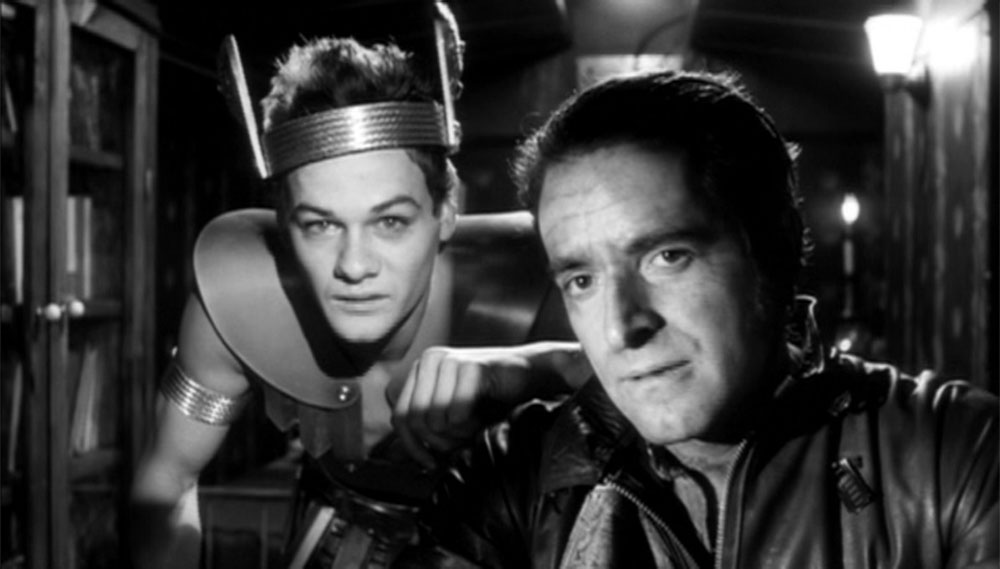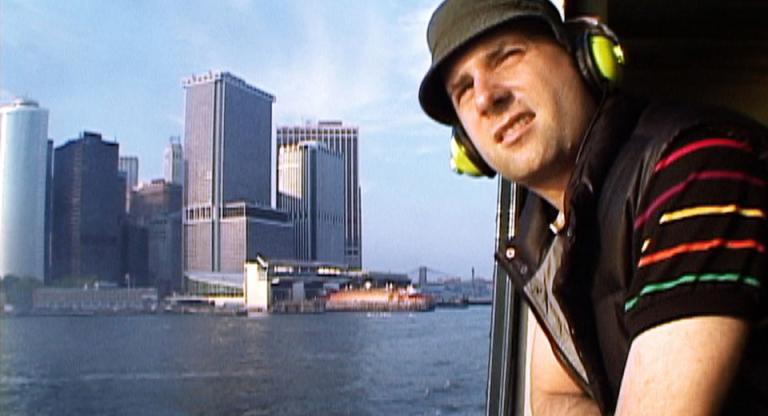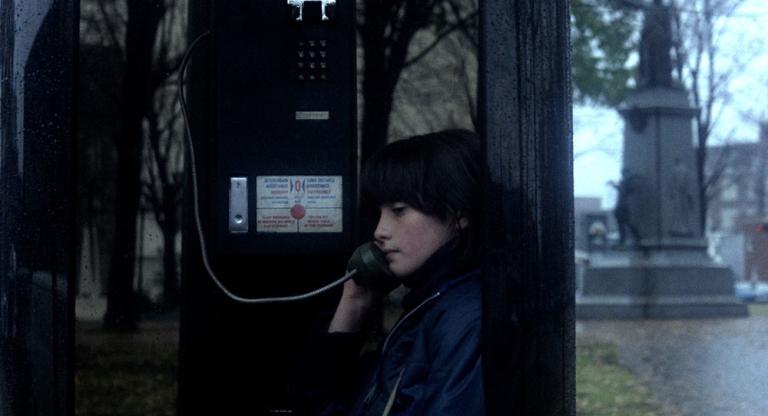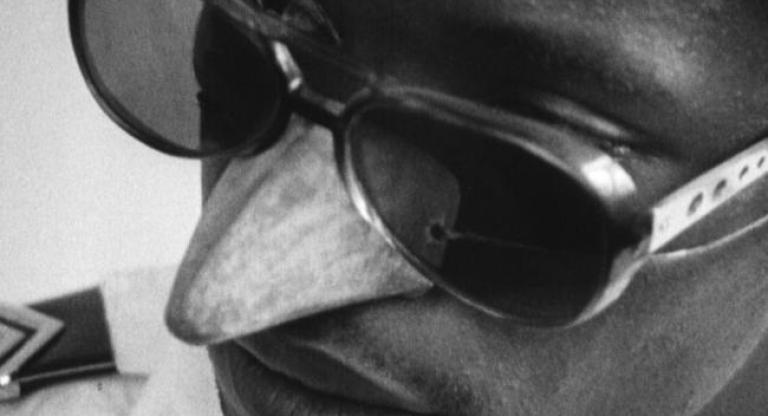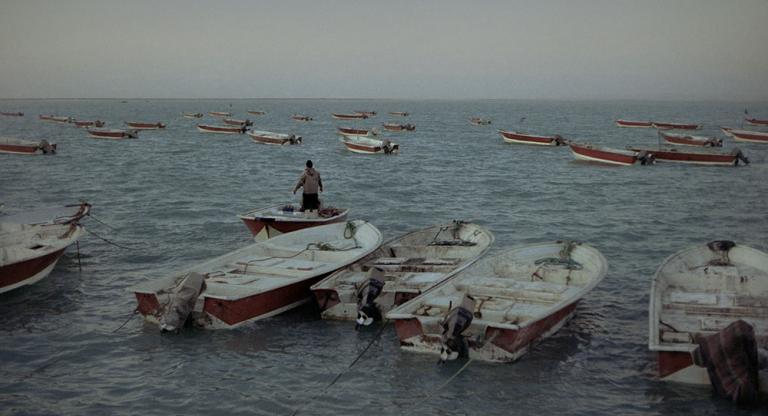Queens-based filmmaker, musician, animator, and doting father Cory McAbee has been a cross-country fixture of DIY screening spaces and rock venues for going on three decades. Before relocating to our fair metropolis, McAbee spent the better part of the 1980s and ’90s working graveyard shifts running nightclub security in San Francisco—a Travis Bickel–like experience he parlayed into an off-hours filmmaking practice.
In 1996, he started work on American Astronaut, an auspicious debut feature that freely combined his animation practice and scrappy, inventive production design into a hybrid sci-fi Western. After years of toiling in relative obscurity, McAbee’s screenplay for American Astronaut landed in the Sundance Lab, and the film eventually made its debut at the festival in 2001.
Twenty years later, American Astronaut has secured a well-deserved place in the fin-de-siècle indie film canon, while McAbee has amassed a sizable filmography that includes a litany of shorts and his second feature, Stingray Sam (2009). Both films draw heavily from the cowboy yarns of McAbee’s Nevada boyhood, but the two features are also components of a larger, multi-disciplinary career that includes live performance, graphic arts, and even long-distance bike touring.
On the occasion of American Astronaut screening at the Nitehawk Prospect Park, I sat down with McAbee to discuss his peripatetic journey to the director’s chair. The ensuing conversation has been generously transcribed by Ben Easton, and edited for clarity and concision.
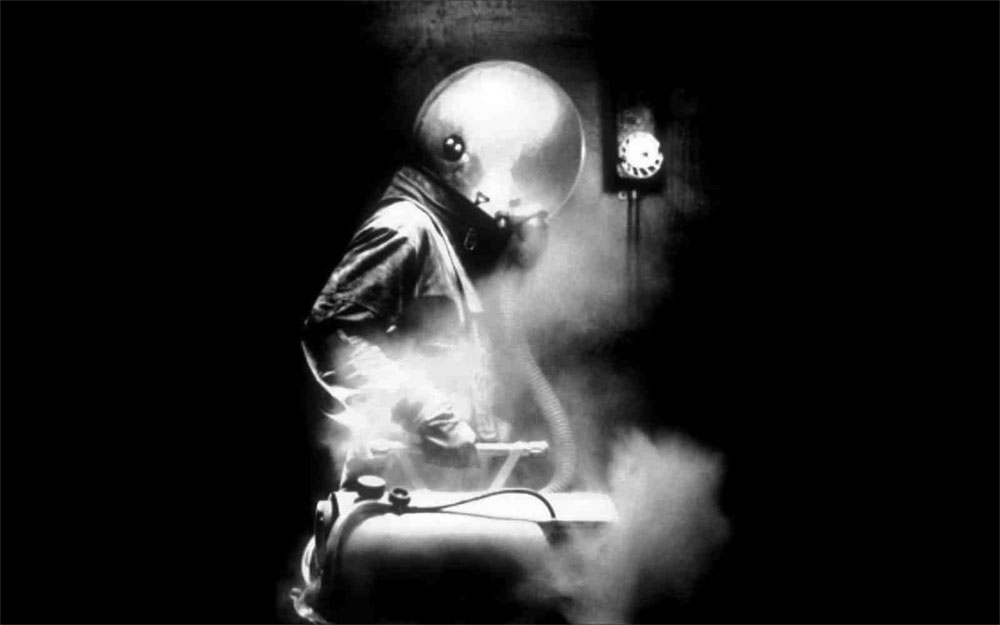
Caroline Golum: For people who may not have heard of your work, who do not know you as an iconoclast, multi-hyphenate Renaissance man, tell us who you are and tell us a little bit about your journey to filmmaking. Did you start off wanting to be a filmmaker, or did you come to it later?
Cory McAbee: When I was young, I didn’t know what I wanted to be, and I just would talk in circles whenever anybody would ask me that. But as time went on, I realized that I wanted to do a lot of different things, and make them all work together. And that’s how I started as a filmmaker—I started as a painter and a musician.
Back in the late ’80s, early ’90s, they used to have animation festivals that would roam around. There was no internet, so the only place you could watch animated shorts were through these touring festivals. I went to see one, and I thought, That’s what I want to do! I want to make an animated short. So I spent the next three years painting 2,173 paintings, which was very boring, and made my first animated short. It was two and a half minutes long.
That was my introduction to the film world. And then I started making other shorts and then doing these live performances. I was playing music and presenting live these, you know, collections of shorts. And then I started making features. And in doing that, too, it’s all the same stuff: starting with music and illustrations, storyboarding everything, approaching it the same way that I began.
CG: There are directors who wear a lot of hats out of necessity. Then there are people who really relish that sort of thing. I think I know which camp you lean more toward. You don’t strike me as somebody who does it to save money.
CM: Well one of the fun things as an actor-director is working with other actors, instead of sitting behind a camera and watching them. I find that acting in other peoples’ productions, I always feel a little bit nerve-wracked because I don’t really know what they expect, and I’m always afraid I’m gonna let people down. But when I’m the director and I’m working with other actors, it feels a little bit more like playing. For me, there’s not too much that’s more fun than that.
CG: For somebody who is so accustomed to seeing the work done by their own hand—to go from that to delegating responsibility, what is that like for you emotionally?
CM: Every first-time feature film director is guilty of this on some level. You really want to have control because you want to prove to yourself that you can do it. One of the things you have to realize is that you just don’t know, you know? When somebody presents something to you that they worked on, your knee-jerk reaction may be, “Oh, this just isn’t gonna work.” But you still have to try it, and you end up learnin’ things…..
CG: I‘ve been interviewing and speaking with more and more filmmakers lately as a writer, but also because I myself am a filmmaker. It’s the most gratifying and also the most aggravating work in any creative field. A painter goes and paints in their studio, a writer goes and writes on their computer, they can make work that they never want other people to see, and that’s fine. But if you’re making a movie, you have to get other people on board with what you’re trying to do. There is a tremendous amount of vulnerability there in listening to other people.
CM: It’s a chemistry experiment. You put all these different people together and you see what you can do. You might think you’re being really stubborn and protective, but sometimes who you’re working with and their interpretation of the film might be in complete contrast to what you’re trying to achieve.
CG: American Astronaut is a film that took you a long-ish time to make—about four or five years from when you started writing the film to when it premiered?
CM: I started writing it long before I knew how to spell. I finished writing it when I was legible. Nobody was lining up to fund it. I used to run security in nightclubs in San Francisco. I was storyboarding and basing it on everything, you know, my little apartment I lived in, this little one-room thing above a bar. And this other club that I worked at. Everything was structured around my life at the time.
The storyboarding took forever. Not having money is kind of, you know, it’s the luxury of time. You can play with it and nobody’s gonna be disappointed. Nobody’s gonna be angry that you’re not meeting some deadline. You’ve got the freedom to just keep working with it.
CG: And it went through the Lab at Sundance too.
CM: It did. I was younger, inexperienced. Looking back on it, I have a huge amount of respect for [the Sundance Institute]. But, you know, again, I was young. I was living in a bubble, sleeping during the days and working at nightclubs at night, and working on this thing in my own time. I didn’t really understand what they were offering at the time. I loved the people who agreed with me and understood it, but I was very guarded against people who had opposing suggestions.
CG: What does it feel like knowing that The American Astronaut is twenty years old?
CM: The further I get away from it, the more precious everybody becomes. I watched it recently and I was just so proud of everybody. Not just the actors, but just everybody who touched that film. Everybody’s got a very special place in my heart. I have only wonderful memories of that whole event. But you know, like a lot of them have moved on and became very different people. Some became stars, some are dead, you know. But you know, I felt very sentimental watching it.
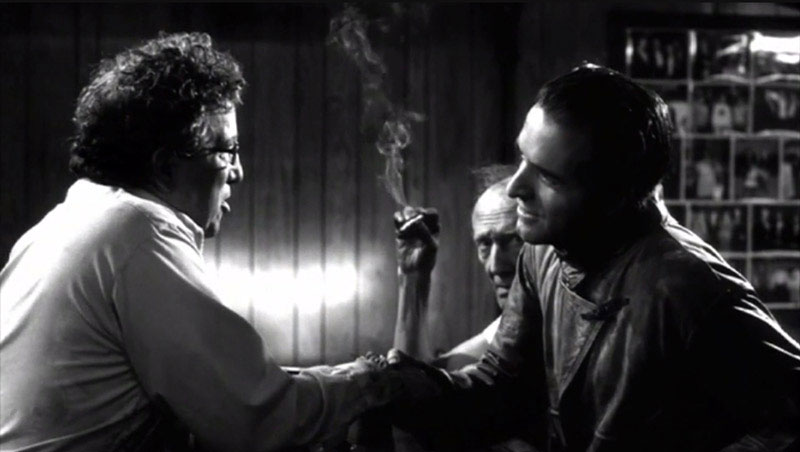
CG: There was a distinct moment in American popular culture, and it’s well-documented in the film Toy Story (1995), where popular culture stops being about cowboys and starts being about astronauts.
It’s such a keenly felt moment in the United States: this shift from cowboys to astronauts. There is still this—some would say pioneering, some would say colonizing—tendency in both.
I want to hear what your favorite Westerns are.
CM: My number one favorite Western is High Noon [1952] with Gary Cooper and Grace Kelly. It’s in real time. You can set your clock to their clock and it all goes in real time which is an exciting thing—it creates urgency.
Something I’ve revisited recently on YouTube is The Wild Wild West [1965–1969], the TV show. I love the early ones with Dr. Miguelito Loveless. He was amazing. He had these young sort of innocent women, and he was always so, like, romantic with them. He lived in this sort of, like, science-over-everything-else fantasy world. It was, it was so bizarre, you know? In comes James West with his waistcoat, which I styled for Stingray Sam after James West. There was one episode where he did these paintings, and he could use this machine to fuse assassins into paintings, and then sell the paintings to rich people, and then play a certain chime note to where these assassins would come out in their homes and go kill them.
CG: You take a long-ish time between projects. You have a family, and there are other mediums that you use to express yourself. But there are these gaps in your resume, as it were, that I would like to address.
CM: I’m always making something. I’m always playing around. Earlier, before we began our interview, we were talking about bikes. I just got a bike six months ago, and I’ve been riding it everywhere.
I’m putting together a nationwide freeform festival in support of monarch butterflies. I joined a documentary team from Germany, who’s making a film for German television back in 2013, and we followed the monarch butterfly migration from Chicago down into Michoacán, Mexico. On that trip, I had to have this crash course in butterflies and biology. I’ve been studying them ever since. I’ve also been working with people who work in green burial.
CG: That’s become a really big business!
CM: I’ve reached out to a lot of cemeteries, and I’ve gotten a lot of them to re-introduce native milkweed to their cemeteries, to get butterflies to go into these preserved areas. I’ve gotten about a dozen of them. As of about two weeks ago, the Green Burial Council took a vote saying that they were gonna support my project.
I’ve got this thing called I, Butterfly, a freeform festival I’m putting together, which’ll be people taking it on themselves to go on variations of the monarch butterfly migration trail on bikes. I’ll be working with green cemeteries to host tea parties and wine tastings and things like that along the route, scheduled within the butterfly migration highlighted areas.
CG: … Do you seek out these different experiences because you feel it informs your work? Or is your work just one part of that?
CM: … I’m always working on something, and it’s not always film. There’s usually film involved. There’s usually graphics involved, there’s usually music involved. But it’s about storytelling.
Right before the pandemic hit, I made a thing called the Red Planet Planning Commission. I was trying to figure out a way to use storytelling and to create what I call factual or functional fiction: where you take facts and you take real science, and you create fiction out of it that’s supposed to meet a function.
I wanted to create a story about terraforming Mars: sending human compost, which is now legal in several states, to Mars, before sending people, and sending cockroaches to be our first naked, barefoot explorers on the surface of Mars. For there to be life, there needs to be death. These things would go up there and die, and nobody would care except for me!...
CG: Part of why I was so excited by the prospect of interviewing you is because I wanted to hear from other people that were making work on their own terms, who aren’t limiting themselves, and how that can contribute to the practice. It’s very encouraging.
CM: Well, thank you. Somebody was asking me recently: “can you describe what you think art is?” For years I struggled with that word. It’s a compliment. It’s not something you say of your own work, and it’s not something you say of yourself. I remember once that my wife said that art is something that makes you look up from your circumstances. It makes you look up from where you are.
Another friend of mine says it’s something that touches you deep inside in a very personal way. And so for me to walk around saying I’m an artist is for me to go: “I can touch you in a personal way, and make you look up from your circumstances!” By not going around thinking I’m making art, but just experimenting and seeing what I can do, and playing with things, and learning. If what I do affects somebody that way, I couldn’t be more honored and humbled. That’s what this is.
